a new tradition
food detective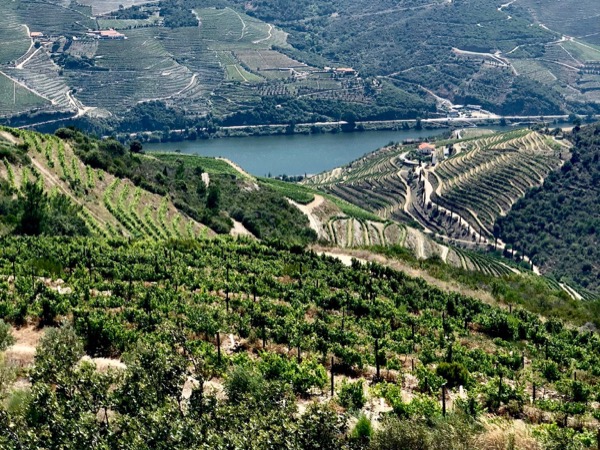
This summer while my youngest was hiking through Norway she face-timed me to say, “Mom, why don’t you come over to Europe so the two of us can do a trip together.” I thought- how can I drop everything to fly over to Europe to be with her. Then I thought- how can I not drop everything to go on a one-on-one adventure with my little girl.
In the coming weeks we plotted and pondered destinations. One quickly rose to the top- Portugal. We refined it further and decided to visit the country’s wine regions.
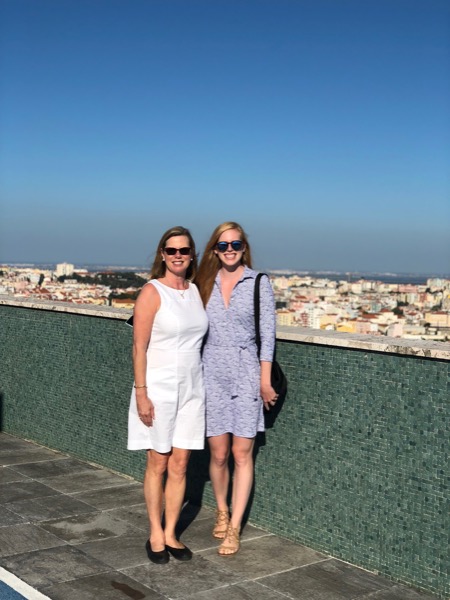
While Portugal has been growing grapes and producing fortified wines for centuries, their production of table wines is relatively new. Over the past two decades the number of varietals, styles, and vintners have grown and evolved exponentially. Think of Napa Valley eighty years ago.
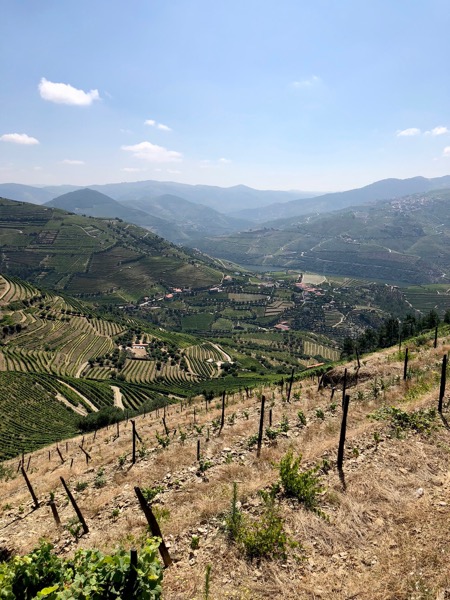
Another exciting aspect, Portuguese wine is defined by its regions and the uniqueness of their local grapes. Our familiarity with French and American wine wasn’t going to give us an advantage in understanding the magic that was being produced in this historic costal country. It truly would be a new adventure. One that my daughter and I looked forward to drinking in fully.
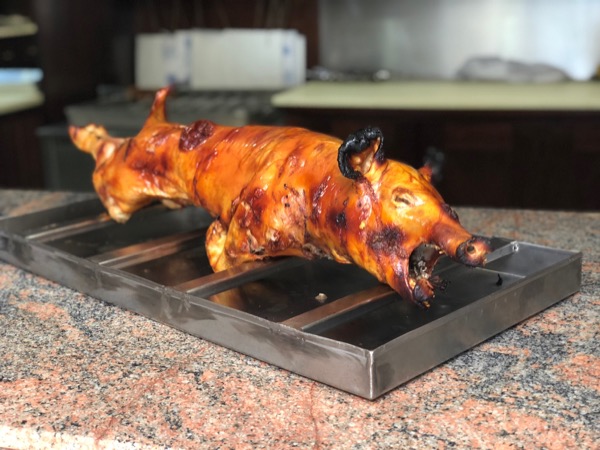
Once we both landed in Lisbon, our adventure began in the Bairrada region. On our way to the Quinta Luis Pato winery we stopped for a customary lunch of suckling pig. As we discovered- it’s tradition!
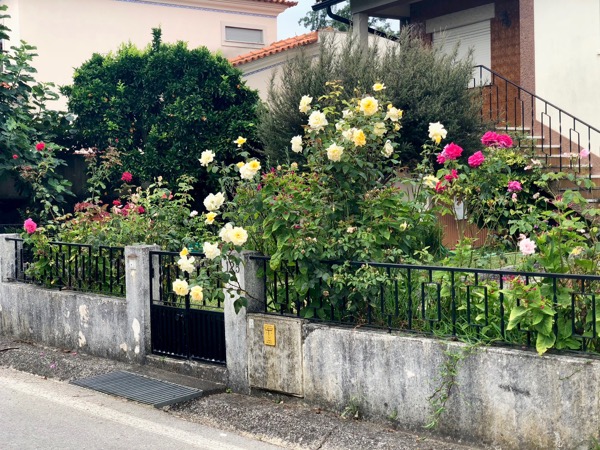
The Bairrada wine region, nestled between the ocean and the mountains, is known for its hot days and cool nights. The region’s Atlantic influence preserves both acidity and fruit character in its red and white wines. The area is considered the sparkling wine center of Portugal.
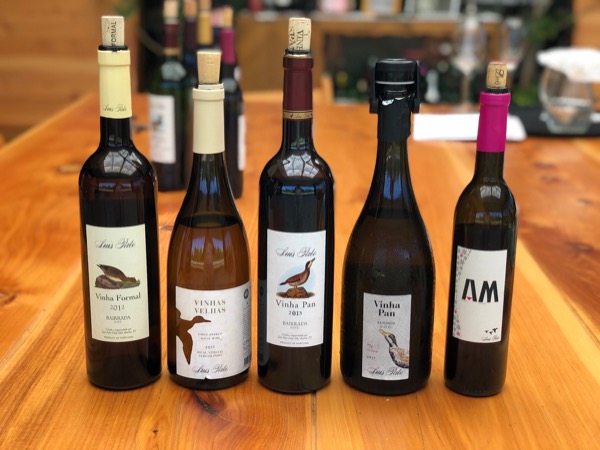
The Pato family has been producing wine at Quinto do Riberinho since the 18th century. The current owner, Luis Pato, is widely regarded as the “rebel”. His wines fully embrace the terroir and its native Baga grape, a finicky variety typically compared to Pinot Noir and Nebbiolo.
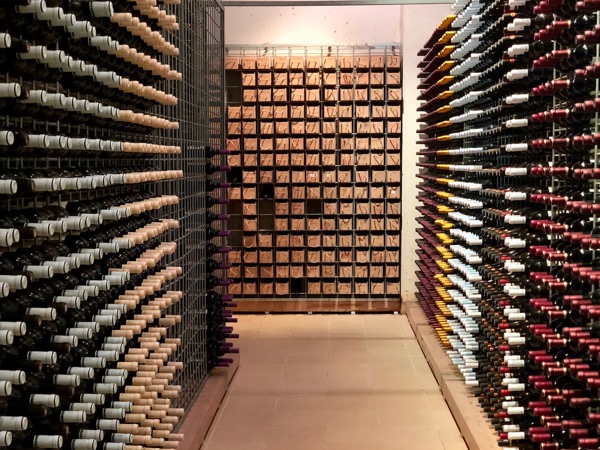
In touring his winery and tasting his wines it became clear that he enjoys bucking convention to create natural wines that embody each aspect of this region, and always on his own terms.
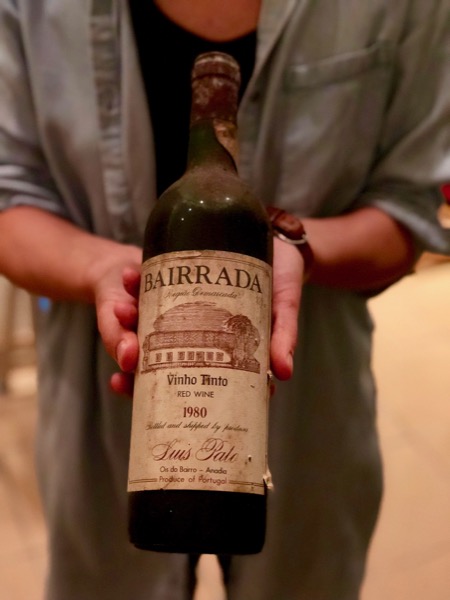
They have an extensive wine library and laboratory to analyze each step of the aging process. In the library, we got to see the first bottle of their vinho tinto, a dusty magnum tucked away in a corner.
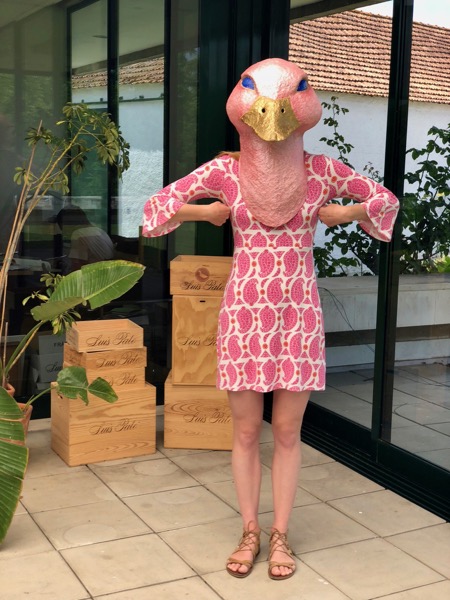
The spirit of the Pato family is evident throughout the winery. The name “Pato” literally means duck in Portuguese. After her first sip of Bairrada wine my daughter was transformed!
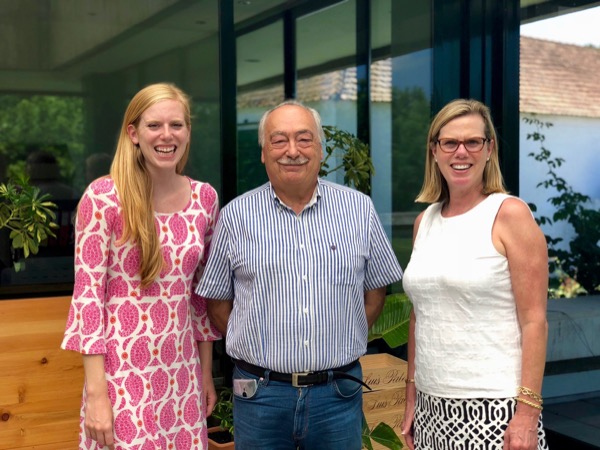
We were so fortunate to be able meet Luis Pato, aka Mr. Baga. His brusque passion was immediately evident. We delighted in hearing his stories as he opened each and every bottle.
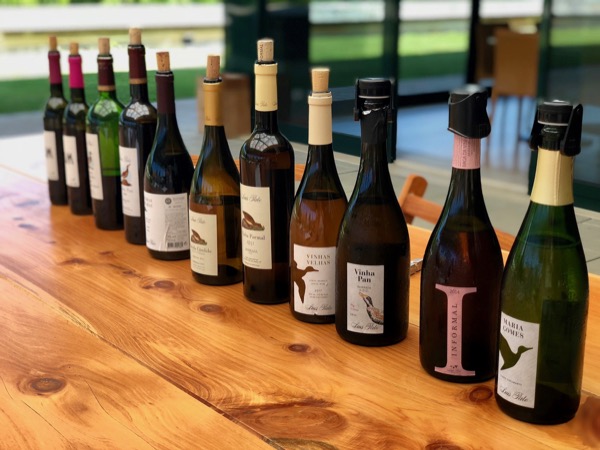
We delved into the wines of this region and the Baga grape. Pato uses only Portuguese grapes. The red varieties include Baga and Touriga Nacional. The white varieties are comprised of Maria Gomes, Bical, Cercial and Sercialinho. After this incredible tasting we said our goodbyes and set north for our next wine region.
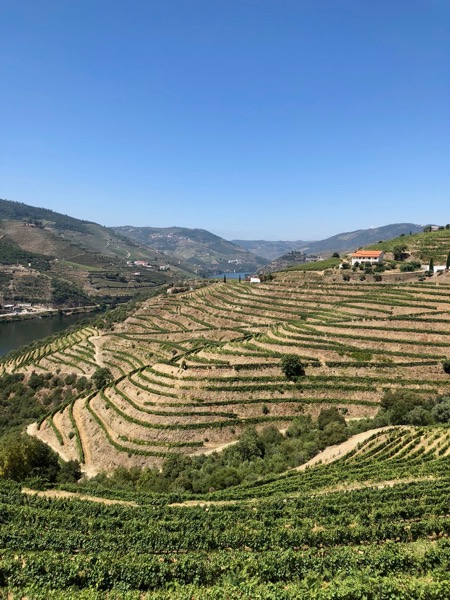
The Douro Valley is one of the most picturesque places in the world. It is famous for vinho verde, the green white wine which is a summer staple, and dry Douro reds, made with the distinctive Touriga Nacional grape.
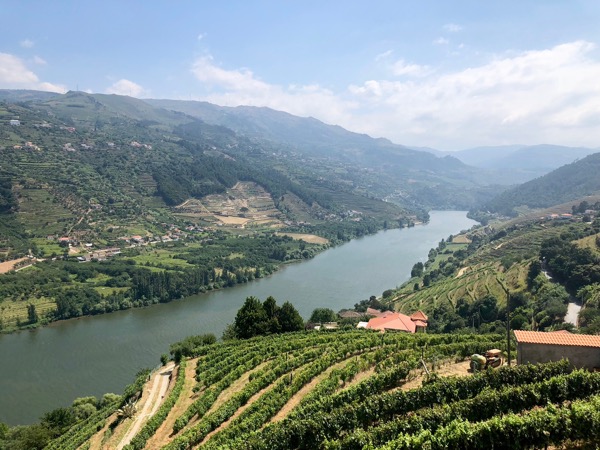
On our way to Quinta Nova, we traveled the road along the Douro river. We discovered why this stretch between Peso da Regua to Pinhão is considered one of the most beautiful in Portugal. It is spectacular, nestled between the hills and river bank with views of the terraced vineyards above. The trip to the winery on top of the steep hills the Douro Valley did not disappoint with its breathtaking views, albeit nauseating turns.
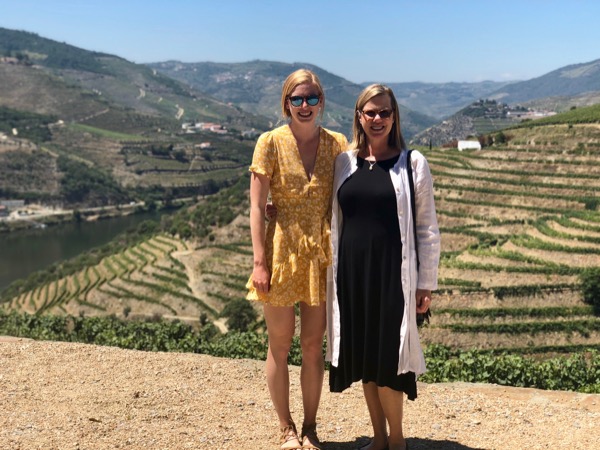
Quinta Nova has 125 hectares of vines. Because it is very hot, the winery grows only red grapes on the property. The Toiega Nacial grape dominates their land. For their white wines they bring in grapes from neighboring vineyards.
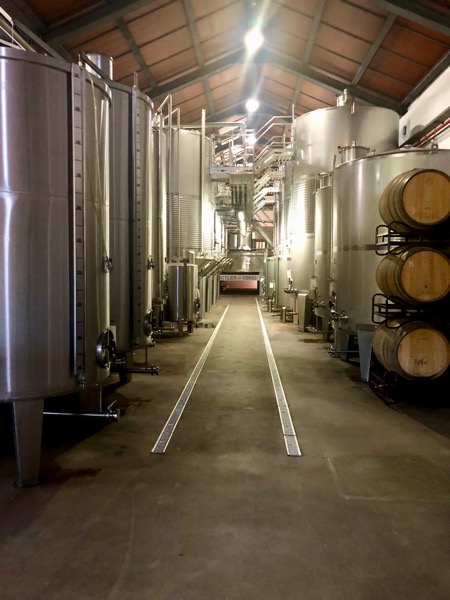
In 1758, Quinta Nova received its granite landmark and was recognized as a prime Douro wine production area. In 1999 the Amorim family acquired the vineyard and took over production.
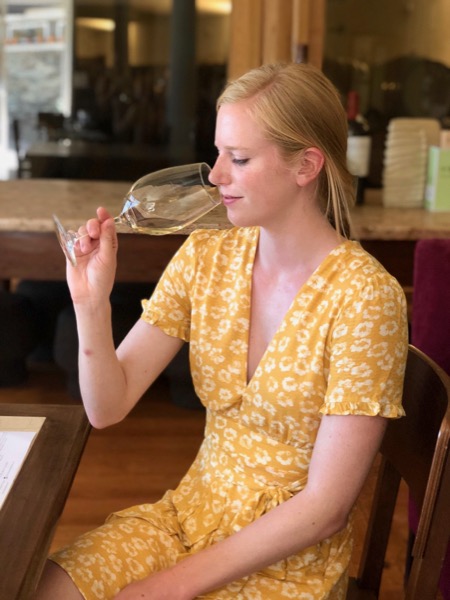
Their old vines are over 50 years old. Currently they produce 90% dry table wine and only 10% port. They hand pick all of their grapes and use a mechanical fermentation process. Their Mirabilis is considered one of the best white wines in Portugal. My daughter and I concurred, as we enjoyed a bottle to accompany our incredible lunch on the vineyard’s terrace.
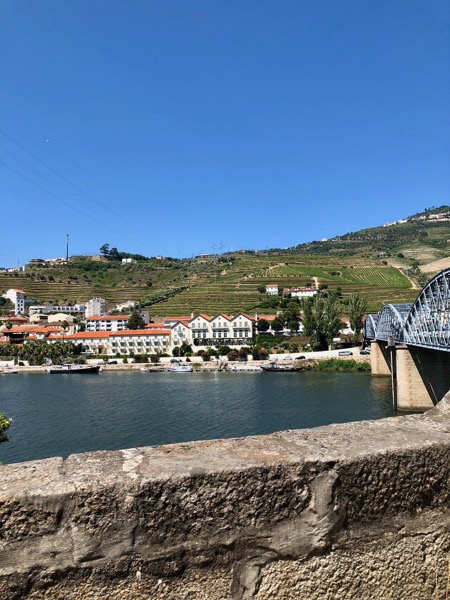
We then made our way down the steep hillside toward the Pihno bridge, and once again traveled along the “most beautiful road” in Portugal.
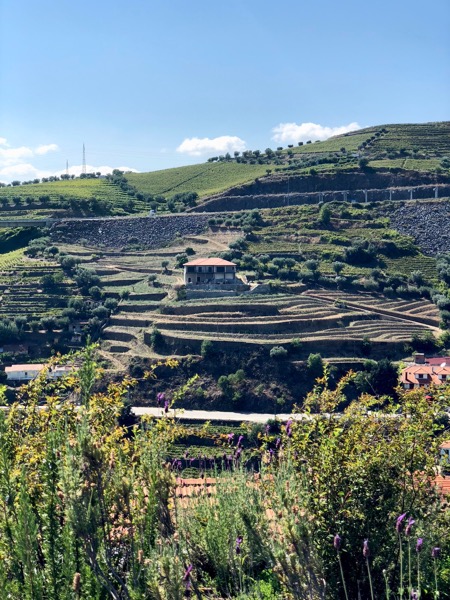
Later that afternoon we arrived at Quinta do Vallado, which was founded in 1716. The winery grew in acclaim under Antonia Adelaide Ferreira, considered the Queen of the Douro. This winery has been in her family for six centuries. In 1993 the winery started producing more red table wine than port.
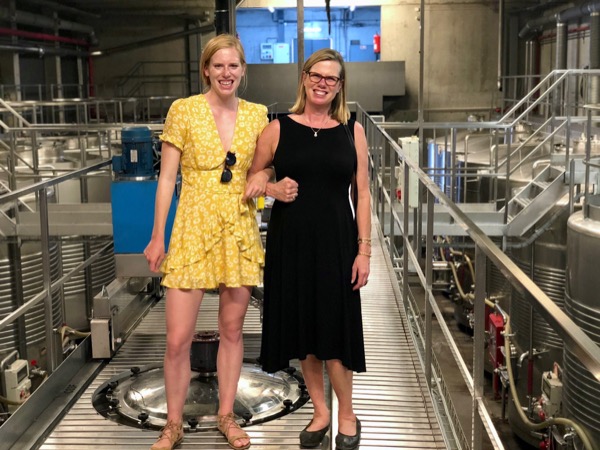
As is typical in the region, their old vines consist of mixed grapes. All of their wines are made by hand. They still foot stomp one vintage port and one old vine red by foot each year. Their lighter wines are aged in stainless. My daughter and I received a stomping tutorial on site.
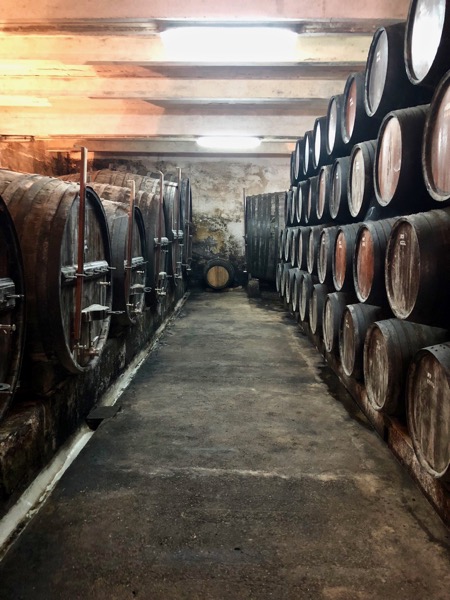
Their more emblematic wines are aged in oak. They age their wine in French barrels, which is the Portuguese custom. The port barrels in their old cellar are hundreds of years old.
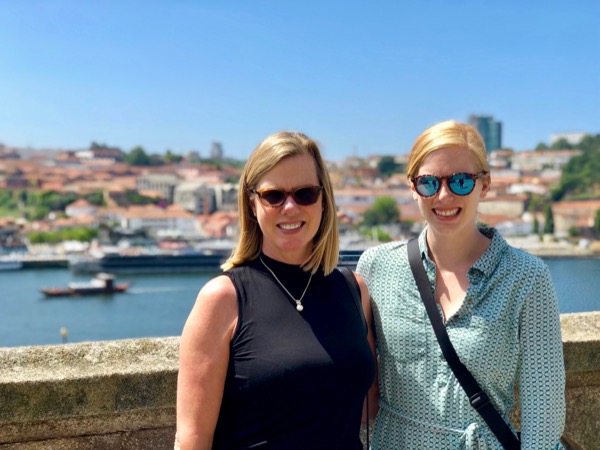
As our full day commenced, we headed back to our hotel oasis at the Six Senses. The next day we departed for the city of Porto for two nights.
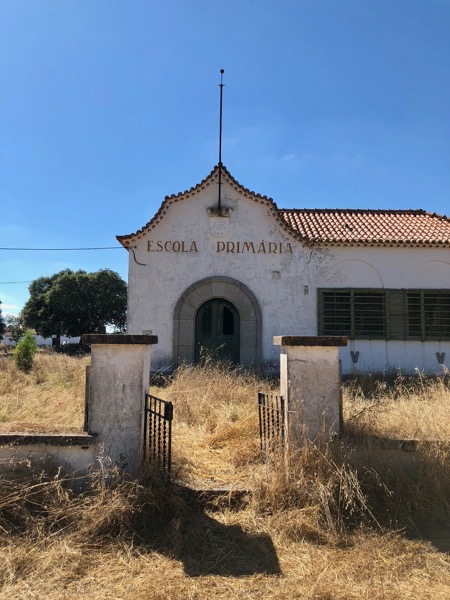
Once we returned to Lisbon, we set off for the Alentejo wine region. The warm southern climate is similar to that of Tuscany. With an emphasis on regionality, Alentejano winemakers distinctively make their wines using the local Trincadeira and Antão Vaz grapes.
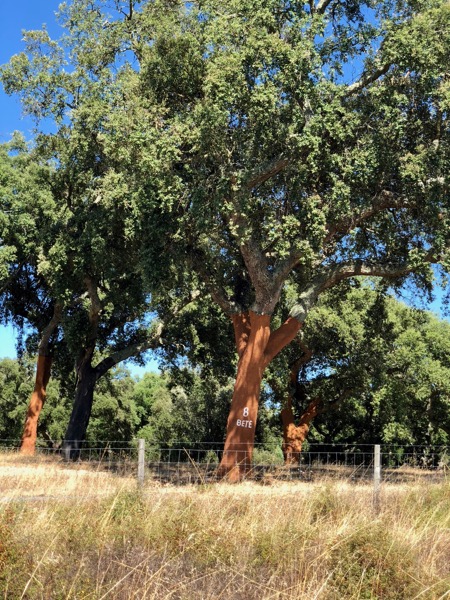
On our way inland toward Cuba we passed orchards of cork trees. Portugal is one of the world’s largest producers of cork. The cork is harvested by carefully peeling away the thick bark from the trunk. Unharmed, the cork bark grows back in nine years’ time and the process can begin anew.
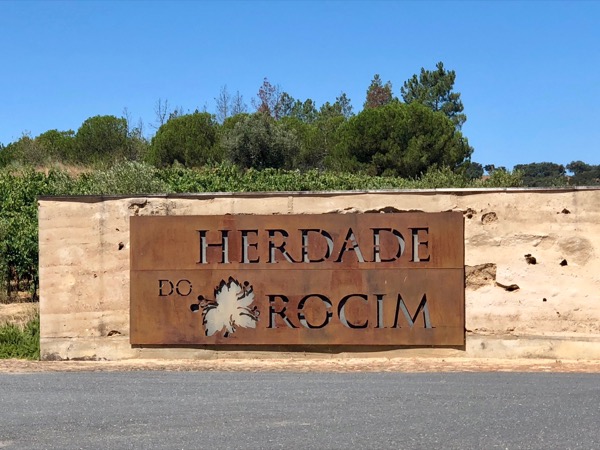
We arrived at Herdade do Rocim, an impressive estate located between Vidigueira and Cuba, in the Lower Alentejo wine region along the Vidigueira fault.
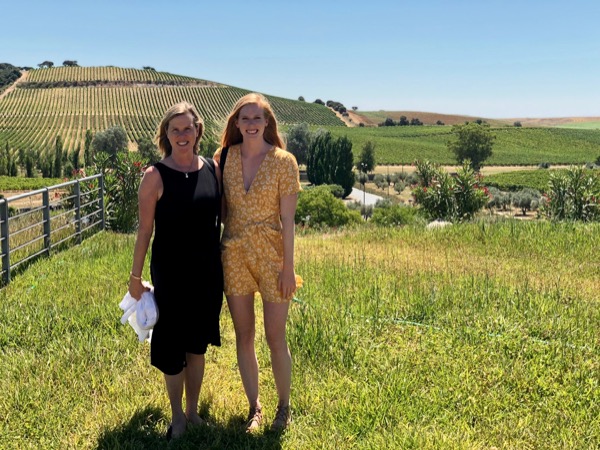
The winery has 120 hectares. Seventy consist of vineyards and ten of olive trees for their olive oil. Rocim’s mission is to produce wines in a sustainable manner, respecting the social, cultural and natural matrix of the region.
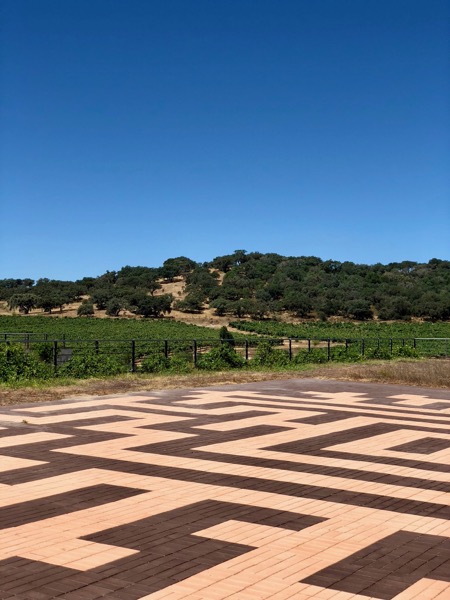
Their wines are fresh and elegant with high minerality. They exclusively use wild yeasts when making their monovarietal and field-blend wines.
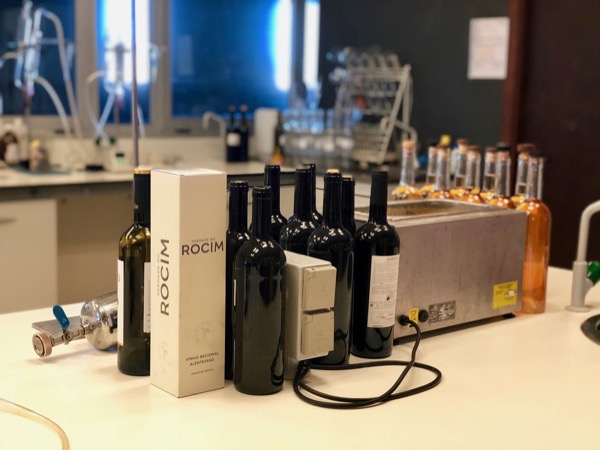
With minimal intervention, and always respecting the principles of sustainability, their oenology aspires to reflect the essential terroir in each bottle they produce. A goal they meet and surpass.
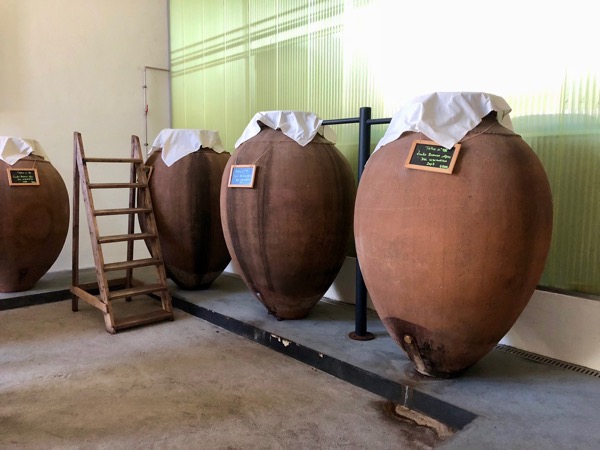
All of the grapes are inspected by hand. During the aging stage, they place their wines in either oak barrels, terracotta vats or cement amphorae.
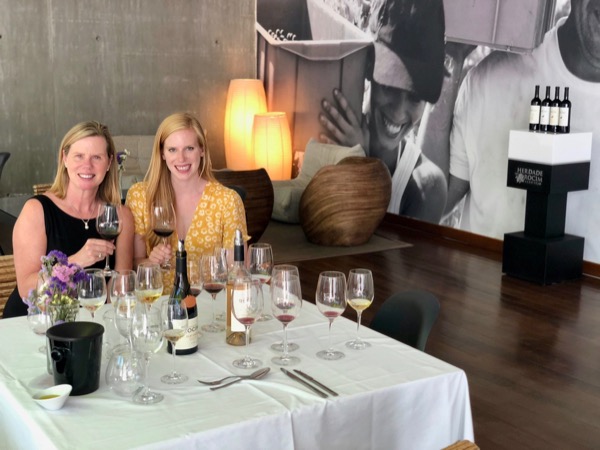
The tour of their vineyards and winery was impressive. But nothing prepared us for the incredible Alentejan meal that was to come. I will touch on this in my next post but suffice it to say that Rocim’s wines and meal were some of the best of our trip!
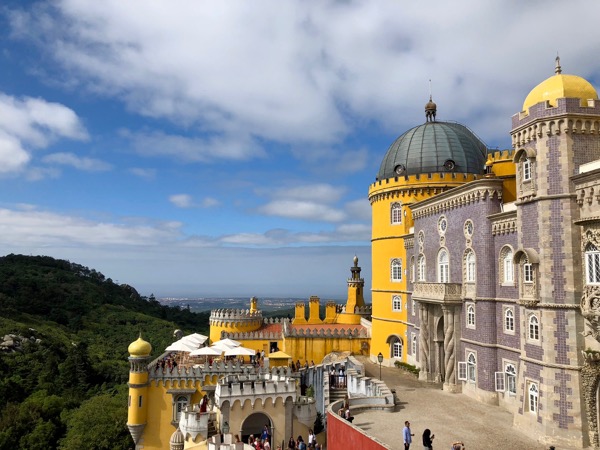
It was fascinating to learn of Portugal’s vast history and its impact on the wine industry. Most notable was how the Salazar dictatorship, which came to power after WWI, was responsible for quashing Portugal’s international wine market and stunting its global presence. For 40 years, the regime forced isolationism and encouraged large bureaucratic cooperatives over small producers, precluding Portugal from entering the global market. It wasn’t until 1986, when Portugal entered the European Union that what we now know as modern Portuguese winemaking began. The reorganization of vineyards was evident in each region we visited.
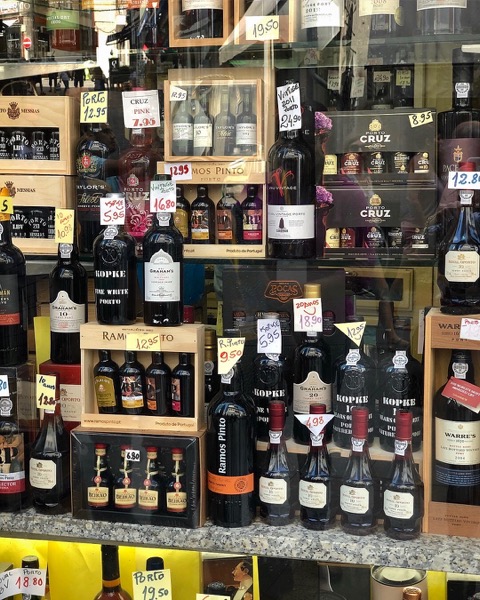
Our trip melded traditions, old and new. We acquired a taste for tawny ports and the sweet custard pastéis de nata. We delighted in a new corner of the wine world. And were impressed with the dedication and commitment of the Portuguese winemakers’ ability to produce wines that embody the essence of the land and accentuate their local grapes. It also hit home how we should all seize the moment and take full advantage of opportunities to be together whenever they arise.
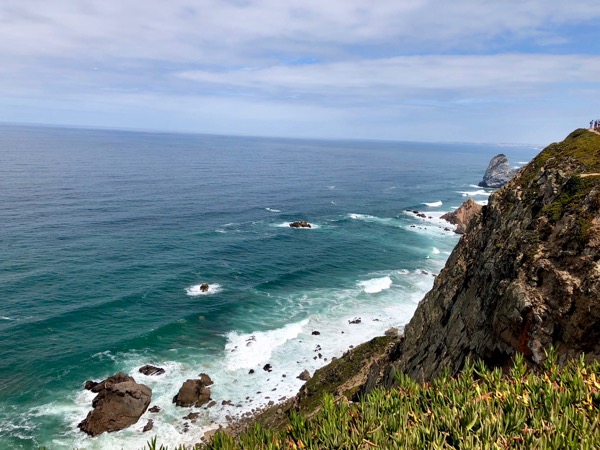
We are eternally grateful to Huffman Travel and Tours for You for helping us to personalize a trip of a lifetime. A huge shout out to Gabrielle, who fielded all of our last-minute questions and emails to make this trip a reality. And to our driver, Nuno, we literally would not have made it out of Lisbon without you. Pedro- obrigada, your restaurant and winery recommendations made our trip!
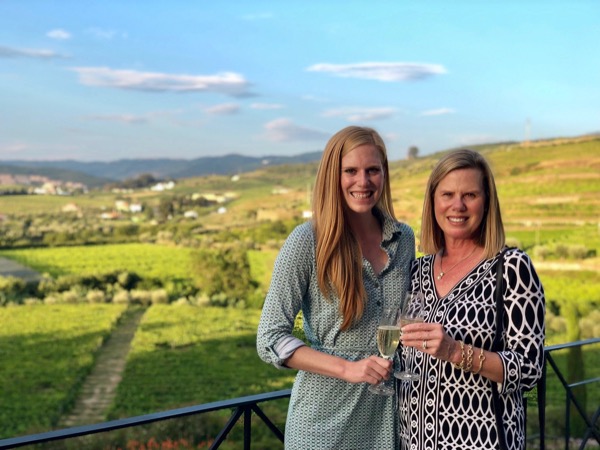
Stay tuned for my next post where I will delve into the incredible meals we had along the way. The food scene, just like the wine one, is on an exciting trajectory. One that my daughter and I will never forget.
 Wherever I find myself, I’m happiest with a full dining room table. As a former professional chef and caterer I want to share what I’ve learned over the past three decades of entertaining. On this site you’ll find tricks of the trade to help even the most harried of you pull off a seemingly seamless fête. Come join the conversation!
Wherever I find myself, I’m happiest with a full dining room table. As a former professional chef and caterer I want to share what I’ve learned over the past three decades of entertaining. On this site you’ll find tricks of the trade to help even the most harried of you pull off a seemingly seamless fête. Come join the conversation!
comment
What an amazing adventure with your sweet Molly! Wow! It’s a trip I would love to do someday. I can’t wait to “experience “ the food experience next!